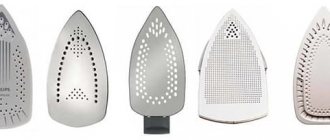Defining the terminology
First, let's find out what a battery is. We open the relevant literature and read:
Ozhegov's Dictionary:
- Small rechargeable battery.
Ushakov's Dictionary:
- Small electric battery for flashlight.
Efremova's dictionary:
- A small battery device for increasing voltage or supplying energy.
Yes, it's a complete mess. Mrs. Efremova’s definition is especially touching. We won’t get help from the great and mighty “bisons”. And all because, from a technical point of view, the concept of “battery” does not exist. Most of those who are far from electrical engineering use this diminutive word to call almost all autonomous current sources - from galvanic cells to batteries and batteries assembled from them. With one condition, that such a source fits into your pocket. For example, no one would call a car battery a battery. This is a Battery with a capital B!
More advanced users use the word “battery” only to refer to galvanic cells and batteries assembled from them, but do not touch batteries and rechargeable batteries.
So what are all these devices actually called? The issue is resolved simply. It is enough to understand two definitions:
- A galvanic cell is a single device that generates electrical energy through internal irreversible chemical processes.
- A battery is a single device capable of storing electrical energy through internal chemical changes and subsequently releasing it through reverse chemical processes.
In other words, something disposable (worked and thrown away) is a galvanic cell. Something that can be charged repeatedly is a battery. If the elements are connected to each other according to one scheme or another, then this design is called a battery. For galvanic cells – a battery of galvanic cells. For batteries – a battery of batteries or a rechargeable battery.
Thus, in the topmost photo in the first and second positions from left to right there are batteries of galvanic cells. The first is assembled from 6 elements, the second (it is often called flat) - from three. The third position shows a nickel-cadmium battery, the fourth and fifth positions show galvanic cells, and the last position shows a battery consisting of two nickel-metal hydride batteries. But with a clear conscience we call all this “batteries”, and then we get offended when they can’t understand us! As for the car battery, which, oddly enough, is not called a “battery”, it is precisely a battery consisting of six batteries (popularly called “banks”).
Expert opinion
Alexey Bartosh
Specialist in repair and maintenance of electrical equipment and industrial electronics.
Ask a Question
Interesting. Many people believe that mobile devices contain batteries (note, not just any “batteries”). In fact, all smartphones, telephones and other similar equipment contain single batteries, not batteries. An exception may be a laptop battery, consisting of a set of single batteries.
On the left is a battery for a phone, on the right is a battery for a laptop, consisting of six batteries
Main characteristics of batteries
We've sorted out the terminology, now let's see what types of batteries there are and how they differ from each other.
Form factor
Modern batteries - both galvanic cells and batteries based on them - are available in various form factors. The most common are cylindrical and disk. Some batteries may be rectangular in shape.
The most popular sizes of galvanic cells and batteries
As for batteries, they can exactly repeat the shape and size of galvanic cells, but they can also have an original shape. In the photo below, from left to right, you can see a cylindrical AA battery of 3.7 volts (but not 1.5, like a regular AA battery), a disk one that exactly follows the shape of a lithium galvanic cell, and a disk one of the original shape (tablet).
Batteries, like galvanic cells, can be produced in different form factors
Battery types
Based on the type of electrolyte and electrode material, galvanic cells can be divided into:
Saline . Elements of this type have electrodes based on manganese and zinc; salt, ammonium chloride, is used as an electrolyte. The devices are characterized by low electrical capacity and fragility, but have a low cost.
Alkaline. In cells of this type, the same materials are used for electrodes, but alkali is used as an electrolyte - potassium hydroxide. Batteries of this type have higher capacity and longer service life. They are capable of developing high supply currents, but are several times more expensive than salt cells. Alkaline batteries are often called alkaline or alkaline.
Method 4: Volume reduction
The method is quite incomprehensible and exotic at first glance. We need to reduce the size of the battery so that the charge in it is restored on its own.
What should you do for this? Mechanically reduce and make the body volume thinner. To do this, the battery is hit against something hard - asphalt, wall, stone, brick, etc. Or they simply trample on it with thick shoes. You can try to flatten it with a handy tool - for example, pliers.
This method will charge all AA batteries. It must be said that such a “barbaric” method helps restore the charge in some cases even to 100%!
Which batteries can be charged and which cannot?
As we found out, there are a great many types and types of batteries. Which ones can be charged via a charger and which ones cannot?
The answer is simple. You can only charge batteries - it will not be possible to restore energy in a discharged galvanic cell. That is, you cannot charge alkaline, salt, lithium and silver-zinc galvanic cells, which, in fact, are disposable.
Expert opinion
Alexey Bartosh
Specialist in repair and maintenance of electrical equipment and industrial electronics.
Ask a Question
Healthy. Many people, even after reading this paragraph, will still have the question of whether it is possible to charge an alkaline battery. As we defined above, an Alkaline battery is an alkaline galvanic cell, which means it cannot be charged.
What happens if you charge regular batteries?
Now let's find out why you can't charge disposable batteries. First of all, it's useless. During manufacture, the galvanic cell is “charged” with chemicals, which are destroyed during battery operation, forming complex chemical compounds. When the initial substances are completely used up, the battery stops delivering current. It is impossible to restore the original substances from the resulting compounds. The item will have to be thrown away.
Charging galvanic cells is not only useless, but also dangerous. If you force a battery to do something for which it is not intended, for example, forcefully “fill” voltage into it, then the cell may lose its seal and “leak,” flooding everything with electrolyte. But this is also a lesser evil. It’s much worse when, when trying to charge, the battery overheats and explodes. Here it’s not far from an injury, and a stone’s throw from a fire. Thus, under no circumstances should you charge a completely discharged galvanic cell.
But it is not all that bad. Yes, a disposable battery cannot be restored, but it can be recharged without waiting for it to completely discharge. By recharging periodically, it is quite possible to extend the life of the galvanic cell by double or even triple.
Where does the extra energy come from in a battery whose chemical reactions are irreversible? The fact is that during the operation of the galvanic cell, the starting materials are not fully used. Even a completely discharged battery still has a lot of untapped potential. If the battery is completely dead, it will not be possible to revive it. But if the element is periodically “shake” with small charging currents, then it will use up the components more fully and will be able to last longer.
Important! Even recharging a galvanic cell may carry a certain danger of an explosion or fire. Therefore, if we nevertheless decide to do this, we must clearly understand that we are doing this at our own peril and risk.
Additional Tips
Depending on the battery device, they may take different amounts of time to charge:
An acid battery made of lead and used in a car is charged with a current of 0.1 of the rated value. The time is ten o'clock. If the capacity is 50 A/h, then a current of 5 A is required. The condition of the lead plates will not deteriorate from a full charge.
Lead acid battery
Another type is nickel-cadmium batteries. Types: finger and little finger. For the charging procedure, chargers are used, which indicate the required current value. To determine the time, use the calculation method described above.
Nickel-cadmium batteries
Polymer batteries made from lithium. The battery is charged using pulsed currents. Charge control is carried out using the charger processor. The time depends on the current. The time range is 30-60 minutes.
Lithium polymer batteries
The first two types of batteries must be fully charged. But the last type does not need to be charged; a full charge is murder for them.
How to distinguish a disposable battery from a rechargeable battery
We found out what the batteries that can be recharged are called. Their name is batteries. But how to distinguish a galvanic cell from a battery, especially if both are made in the same form factor? This is not difficult to do.
By voltage
No battery produces exactly 1.5 V. It can be 1.2, 1.6, 3.2, 3.7 V, but never 1.5 (see the “Output Voltage” section). If the cell body indicates a voltage of 1.5 V, then this is clearly not a battery. But this rule does not work for batteries. If a battery consists of several cells, then its output voltage can take on different values.
Thus, it is quite difficult to clearly distinguish a rechargeable battery from a battery of galvanic cells by voltage.
According to the accompanying inscriptions
Almost always, the manufacturer indicates its electrical capacity on the battery case. There are no such inscriptions on disposable batteries.
In addition, the type of battery is always indicated - the composition of the electrolyte and the material of the electrodes. In the photo below, we see a nickel-metal hydride battery on the left, and a lithium-ion battery on the right.
The vast majority of batteries are labeled “Rechargeable” or similar. But on the batteries there may be “Not rechargeable” (not rechargeable), and on alkaline ones there may also be the inscription “Alkaline”.
On the left we see batteries, on the right – galvanic cells
By labeling
This is the surest way not to confuse a galvanic cell with a battery. The marking is a code consisting of one or two Latin letters and numbers (for example, LR23 - finger alkaline) behind them. Letters indicate the type of element, numbers indicate its standard size. Just look at the battery label, check the table below and you can find out exactly what we have in our hands.
Marking table for the most popular types of galvanic cells and batteries according to IEC
| First character(s) | Battery type | Numbers after symbols | Standard size |
| R | saline | 23 | A |
| LR | alkaline | 6 | AA |
| FR | Li-FeS2 | 03 | AAA |
| HR | Ni-MH | 12 | B |
| KR | Ni-Cd | 14 | C |
| ZR | Ni-Zn | 20 | D |
| CR | Li-ion galvanic cell “coin” | 25 | F |
| LIP | Li-ion battery “coin” | 1 | N |
| LD or HD | silver-zinc “tablet” | 14250 | 1/2AA |
Effective online calculator
The question that worries me is how many hours it takes to charge the batteries, there is a logical and simple answer. Thanks to a simple formula for calculating the result, you can obtain the necessary data in a few seconds. To do this, you need to enter the parameters of the battery capacity and charger current into the table. Click the “calculate” button and accept the ready answer.
Attention: the resulting value must be multiplied by a factor greater than 1, because part of the energy turns into heat and is lost, especially at temperatures below zero. When calculating the charging time of nickel batteries, a percentage ratio of 1.4 is suitable
The battery discharge voltage should not be less than 0.9V, regardless of the discharge current. In most devices, the threshold value is determined automatically.
You can interrupt the charge, but the total value should not be less than the calculated value. During the charging process, the device body may heat up, the maximum temperature is 55 degrees. In this case, the device switches from the main charging mode to the secondary charging mode. The temperature drops and the process is renewed.
Charging instructions
Let's start with galvanic cells. As mentioned above, these cells cannot be recharged, but can be recharged periodically to extend their life. The method is suitable for batteries whose voltage has not dropped below 1.2 V (for single alkaline and salt batteries). If it is lower, it is too late to recharge.
Expert opinion
Alexey Bartosh
Specialist in repair and maintenance of electrical equipment and industrial electronics.
Ask a Question
Important! It only makes sense to recharge batteries that operate in low-power devices. If the battery operates with high discharge currents, then recharging will do almost nothing.
Now let's figure out how to charge the battery at home to extend its service life. For recharging, a small pulsating current is usually used. For batteries of size AA and AAA, the charging current is selected at about 10 mA; for sizes B and C, the current can be increased to 20 mA; for batteries of type D, we restore it with a current of 30-40 mA. Lithium three-volt “coins” are restored with a current of 3-4 mA; for silver-zinc “tablets” we select a current of about 1-2 mA.
How long does it take to charge? Depending on the condition of the element, its capacity and charging current, the time can range from tens of minutes to several hours. The end of recovery is determined by the voltage at the element terminals. As soon as it rises to a value of 1.7 V (for single alkaline and salt batteries), charging is stopped.
Important! During the charging process, it is necessary to constantly monitor the temperature of the battery case. If the element becomes noticeably hot, recharging is stopped immediately. And, of course, the charging element should never be left unattended.
DIY battery charger
Of course, you can’t do without a special charger, but its circuit is quite simple. Anyone with basic knowledge of electrical engineering can repeat the design. As an example, consider the circuit of a charger that can be used to recharge cylindrical salt and alkaline galvanic cells.
The alternating voltage, reduced to 3-4 V, is supplied to a simple rectifier made on a silicon diode VD1. The resulting pulsating unipolar voltage is applied to the positive terminal of the charged element. Voltage is supplied to the negative terminal through ballast lamp L1, which limits the charging current.
The design can use any mains step-down transformer, including a low-power one, with an output voltage on the secondary winding of 3–4 V. If you use a transformer with taps, as shown in the diagram, the charger can be used to recharge elements or batteries with a higher voltage. In this case, the voltage at the output of the transformer should be approximately 1 V higher than the operating voltage of the battery being restored.
Almost any rectifier diode can work in place of VD1. The light bulb is selected depending on the required charging current. It can be designed for an operating voltage from 3.5 to 13.2 V. It is quite clear that instead of a light bulb, you can use a variable wirewound resistor. This will allow you to quickly change the charging current.
The device works like this:
- Connect a rechargeable battery and plug the device into the network.
- The voltage at the battery terminals is periodically measured, and when it exceeds the nominal value by 0.2 V (for a single cell), charging is stopped.
If a battery is being charged, then 0.2 is added to the rated voltage of the battery, multiplied by the number of cells in this battery.
Now let's find out how to charge the batteries. Everything is much simpler here, and you don’t need to invent anything. For these purposes, special chargers (chargers) are used, which can be purchased at any relevant store. Moreover, there are devices for charging both one battery and several at the same time.
This charger can charge two AA batteries at the same time.
The only thing you need to pay attention to when buying such a device is the following:
- The device must be designed to install batteries of the size we need.
- The charger must support charging the type of battery we need. If, for example, we have Ni-MH power sources, then they cannot be charged with a device designed to work with Ni-Cd batteries and vice versa.
- You shouldn’t chase cheapness and buy simple Chinese chargers. They will quickly destroy batteries, which will be much more expensive than the charger itself.
The photo below shows a device that really deserves attention. Firstly, it has a cassette that can accommodate both AA and AAA size batteries. Secondly, it supports charging any type of battery - you just need to select the appropriate mode.
And thirdly, the device does not charge batteries thoughtlessly, but according to an algorithm that is optimal for each type of battery. At the same time, it monitors the degree of charge and displays information about the current state of the batteries being charged. If necessary, the same device can be used to “drive” the battery to eliminate its memory effect.
But is it different for lithium-ion batteries in phones and laptops?
The same applies to lithium-ion batteries. Of course, no one has canceled the concept of “charging and discharging simultaneously with the release of heat” (if you understand what we’re talking about), but in practice the EMF of a regular gadget is about 3.7 V, and the charging voltage is much higher (~5 V). That is, the battery is not used while charging.
About the concept of “charging and discharging simultaneously with heat release”
Here's what sometimes happens in laptops: If a battery-powered external power supply device can handle heavy loads, the battery ends up being used as a buffer for external power.
For example, a circuit requires a circuit of 10 A for 30 seconds, then 1 A for the next 30 seconds. Yes, voltage matters, but let's just stick to current to explain things more simply.
So overall we need 5.5A on average. Let's assume that the external power supply can provide 6 A (laptops usually have 4.74 A and 6.3 A adapters, but let's simplify for the sake of this example).
Thus, for 30 seconds of every minute the battery is discharged at a rate of 4.4 A. During the remaining 30 seconds, it can be charged at 4.6 A. In this case, 0.2 A is the charging and discharging loss. In other words, at the end of the cycle the battery is at the same level as before. This 0.2A is what generates the heat.
Choosing a charger
And finally, let’s look at which chargers are chosen by users of devices powered by rechargeable batteries. The table was compiled according to the degree of popularity of the latter.
Rating of chargers by popularity
| Rating | Appearance | Model | Manufacturer | Battery type | Battery size | Number of compartments (independent channels) | Additional functions | price, rub. | Where can I buy |
| 1 | Nitecore D4 | TM Nitecore | IMR/Li-ion, Ni-MH/Ni-Cd | AA (R6), AAA (R03), AAAA, C (R14), 26650, 22650, 18650, 10440, 14500, 16340, CR123A, 17670, 17500, 18490, 18350 | 4 | Automatic type detection, status display on LCD display, capacity detection, restoration, protection against polarity reversal, overcharge, overdischarge, powered by car cigarette lighter | 2 200 | Ya.Market | |
| 2 | Liitokala Lii-500 | Liitokala | Li-ion, Ni-MH | 18650, 18490, 18350, 17670, 17500, 17335, 16340 (RCR123), 14500, 10440, 26650, 22650, 26500, A, AA, AAA, SC | 4 | Automatic type detection, LCD status display, test function, recovery, reverse polarity protection, overcharge, overdischarge protection, USB port 5V/1A | 2 700 | Ya.Market | |
| 3 | Palo P10 | Palo | NI-MH, NI-CD | AA, AAA | 8 | LED charge indication, fixed charging current (200 or 180 mA), low cost, pair charging, pair auto-off at the end of charging | 900 | ||
| 4 | Opus BT-C3100 v2.2 | Opus | Ni-Cd, Ni-MH and Li-Ion | AA, AAA, C (R14), 10440, 16340, 14500, 17500, 17335, 17500, 18490, 17670, 18650, 22650, 26650 | 4 | Auto-detection, charge/discharge/testing, status display on LCD display, charging and recharging current programming, trickle charging mode, recovery | 2 800 | Ya.Market | |
| 5 | SkyRC MC3000 | SkyRC | NiMh, NiCd, NiZn, Eneloop, Lithuim-Ion, Lilo4.35, LiFeP04 | AA, AAA, C, D, SC, AAAA, 18650, 14500, 16340, 32650, 14650, 17670, 10440, 18700, 18350, RCR123, 18500, 18490, 25500, 13500, 13450, 1665 0, 22650, 17500, 10340, 17650, 10500, 26500, 12340, 12500, 12650, 14350, 14430, 16500, 17350, 20700, 21700, 22500, 32600 | 4 | Automatic type detection, status display on LCD display, remote control via Bluetooth 4.0, recovery, protection against polarity reversal, overcharge, overdischarge, temperature control, USB port 5 V/2.1A, power supply from on-board network, maximum charging current up to 3 A | 7 000 | Ya.Market |











